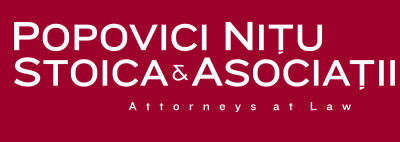- About Us
-
Expertise
- Banking & Finance
- Capital Markets
- Competition & Antitrust
- Corporate & Commercial
- Data Privacy
- Employment & Pensions
- Energy & Natural Resources
- Gambling & Betting
- Healthcare & Pharmaceuticals
- Insurance
- Intellectual Property
- International Arbitration
- Litigation
- Mergers & Acquisitions
- Project Finance/PPP, Concessions & Infrastructure
- Public Procurement
- Real Estate
- Restructuring & Insolvency
- Sports Law
- Tax
- Telecommunications, Media & Technology
- Transports & Logistics
- White Collar Compliance & Defense
- Our team
- Careers
- Publications
- News and Press
- Contact
Legal Update
EC proposal for amending AIFM and UCITS Directives
CAPITAL MARKETS
Key changes to expect
Late last year, the European Commission published its proposal[1] for a Directive amending the AIFM Directive (Directive 2011/61/EU) and UCITS Directive (2009/65/EC) (the Proposal.)
By these proposed changes, the Commission aims to increase investor protection, reduce the risks posed by Alternative Investment Funds (AIFs) to overall financial stability and strengthen AIF market integration.
 Capital Markets: EC proposal for amending AIFM and UCITS Directives
Capital Markets: EC proposal for amending AIFM and UCITS Directives
But what changes does this legislative initiative actually bring for Alternative Investment Fund Managers (AFIMs) and AIFs in the EU? We summarized below the key proposed amendments to AIFMD.
Loan Origination
In an effort to make financing more accessible to European companies, the European Commission wants to allow AIFs to engage in loan origination activities, recognizing also lending as a legitimate activity of AIFMs. The new additional non-core services to be performed by AIFMs are “benchmark administration” and “credit servicing”.
This means that AIFs could extend loans anywhere in the Union, including cross-border, subject to special rules, such as:
- an investment limit of 20% of the AIF’s capital if the borrower is a financial undertaking or a fund;
- prohibition to grant loans to its AIFM or its AIFM’s staff, its depositary or its delegates;
- AIFs shall retain an interest of 5% of the notional value of the loans it has originated and subsequently sold on the secondary market;
- ensuring that a loan-originating AIF is closed-ended structure if more than 60% of that AIF’s NAV represents loans, due to the fact that close-ended funds would not be vulnerable to redemption demands and could hold originated loans to maturity;
- AIFMs managing AIFs that engage in lending activities will have to implement effective policies, procedures and processes for granting the loans, assessing the credit risk, and administering and monitoring their credit portfolios, which should be reviewed regularly.
Licensing - Running an AIFM shall be a full-time job
The Proposal provides for additional requirements for AIFM as part of their authorisation process in the sense of providing the national competent authorities (NCA) with detailed information about the technical and human resources that support their activities.
If any delegation arrangements are made, AIFMs should submit a detailed description of the human and technical resources to be used for monitoring and controlling the delegate.
The conduct of the AIFM’s business will be handed to at least two EU resident persons who are either employed full-time by that AIFM or who are committed full-time to conduct the business of that AIFM, ensuring a minimum stable substance within the AIFM.
ESMA peer review analysis of the supervisory activities on delegation; Letter-box entities
For a reliable overview of delegation activities in the EU, the Proposal requires the NCA to notify the European Securities and Markets Authority (ESMA), on an annual basis, if an AIFM delegates more portfolio management or risk management functions to entities located in third countries than it retains.
Furthermore, ESMA will present to the EU co-legislators and the Commission, at least every two years, a report analysing market practices regarding delegation, with a particular focus on preventing the creation of “letter-box entities” (i.e., delegating risk or portfolio management the extent that, in essence, it can no longer be considered to be the manager of the AIF or the provider of the services).
New liquidity management tools (LMTs)
Fund managers of open-ended funds will have to select at least one appropriate LMT from a list to be added for possible use in the interest of the AIF’s investors. There is no requirement with respect to which tool should be chosen, leaving fund managers with the final decision. However, “the AIFM shall implement detailed policies and procedures for the activation and deactivation of any selected liquidity management tool and the operational and administrative arrangements for the use of such tool”.
ESMA is authorized to draft implementing technical standards to provide definitions and specify the characteristics of the LMTs to be set out in the new annex, and for selecting and using suitable LMTs by the AIFMs.
As per the Proposal, Fund managers of open-ended funds would be able to suspend the repurchase or redemption of the AIF units or shares temporarily.
Almost an EU wide-passport for depositaries
As per the AIFMD, the depositary should be located in the same Member State as the appointing EU AIF. The European Commission proposes for AIFs to be able to also procure depositary services located in other Member States.
Additional investor disclosures
To ensure a better protection for investors, AIFMs should inform them about the following:
- conditions for using the LMTs;
- fees that will be borne by the AIFM or its affiliates;
- all direct and indirect fees and charges that were directly or indirectly charged or allocated to the AIF or to any of its investments;
- portfolio composition of originated loans.
Marketing AIFs under the National Private Placement Regime (NPPR)
Under the Proposal, non-EU AIFs may only be marketed in the EU:
- if their home states are not identified as a high-risk third country pursuant to the Fourth Anti-Money Laundering Directive[2]; and
- if their home states have signed an agreement with the home Member State of the authorised AIFM and with each other Member State in which the units or shares of the non-EU AIF are intended to be marketed, which fully complies with the standards laid down in Article 26 of the OECD Model Tax Convention on Income and on Capital and ensures an effective exchange of information in tax matters, including any multilateral tax agreements, and that third country is not mentioned in Annex I to the Council conclusions of 2020 on the revised EU list on non-cooperative jurisdictions for tax purposes[3].
***
UCITS implications
The Commission considered that some of the proposed amendments to AIFMD are equally relevant for the activities of UCITS. Therefore, AIFMs and UCITS are expected to share a similar legal framework on delegation, liquidity risk management, data reporting for market monitoring purposes and regulatory treatment of custodians.
***
Feedback
The Proposal is open for feedback until end of March, 2022.
To date, some concerns were linked to the key concepts and definitions used by AIFMD, for a better implementation under the EU. As such, concepts as “pool returned”, “investment policy” and entity with a “general commercial or industrial purpose” should be additionally clarified, especially in relation with real estate projects.
Questions as “Should entities building real estate projects and managing them be regarded as funds falling within the scope of the ISDA? Should a distinction be made between assets built by the entity and those it has only acquired and managed?” have been addressed by the Member States.
As for the concept of “investment policy”, it has been claimed that a legal definition for this key concept could make it easier to assess whether or not a particular fund is the subject of the AIFMD.
Other concerns were linked to possible negative effects with regard to loan originating activities. It has been argued that allowing only closed-ended AIFs to invest in originated loans with a value above 60% of their NAV could lead to a major loss of diversity and resilience of the EU’s financial markets.
What’s next?
After the feedback period, the Proposal will go through the ordinary legislative procedure towards the European Parliament and the Council. Once the Proposal is reviewed and adopted by these institutions, the Member States will have 24 months to transpose it into national laws.
________________________
[1] Proposal for a DIRECTIVE OF THE EUROPEAN PARLIAMENT AND OF THE COUNCIL amending Directives 2011/61/EU and 2009/65/EC as regards delegation arrangements, liquidity risk management, supervisory reporting, provision of depositary and custody services and loan origination by alternative investment funds. Available here.
[2] Directive (EU) 2015/849 of the European Parliament and of the Council of 20 May 2015 on the prevention of the use of the financial system for the purposes of money laundering or terrorist financing, amending Regulation (EU) No 648/2012 of the European Parliament and of the Council, and repealing Directive 2005/60/EC of the European Parliament and of the Council and Commission Directive 2006/70/EC.
This document is intended for informational purposes only, does not represent legal advice and does not focus on particular cases.
For further information or analysis on specific matters, please contact Alexandra Niculae.










